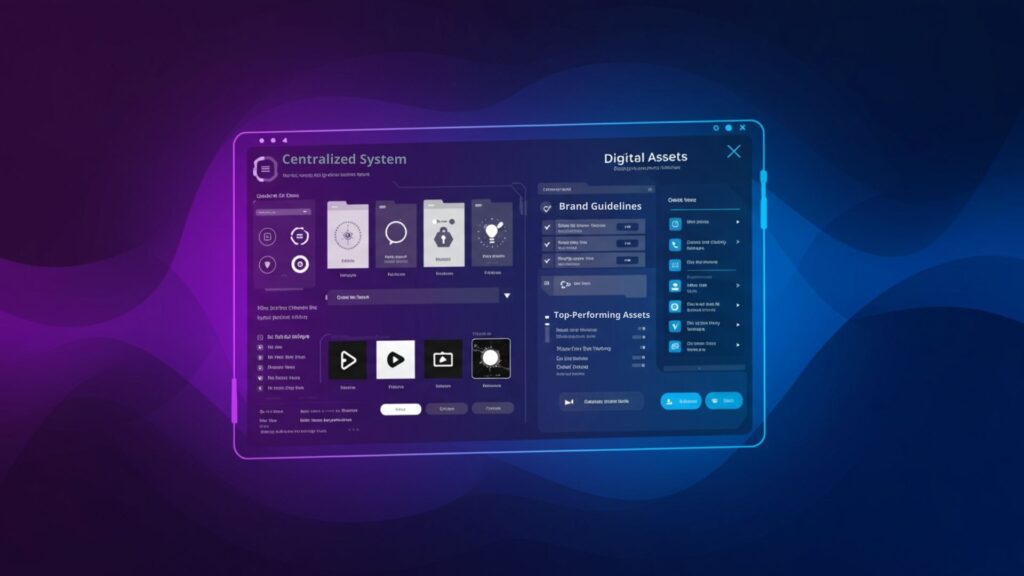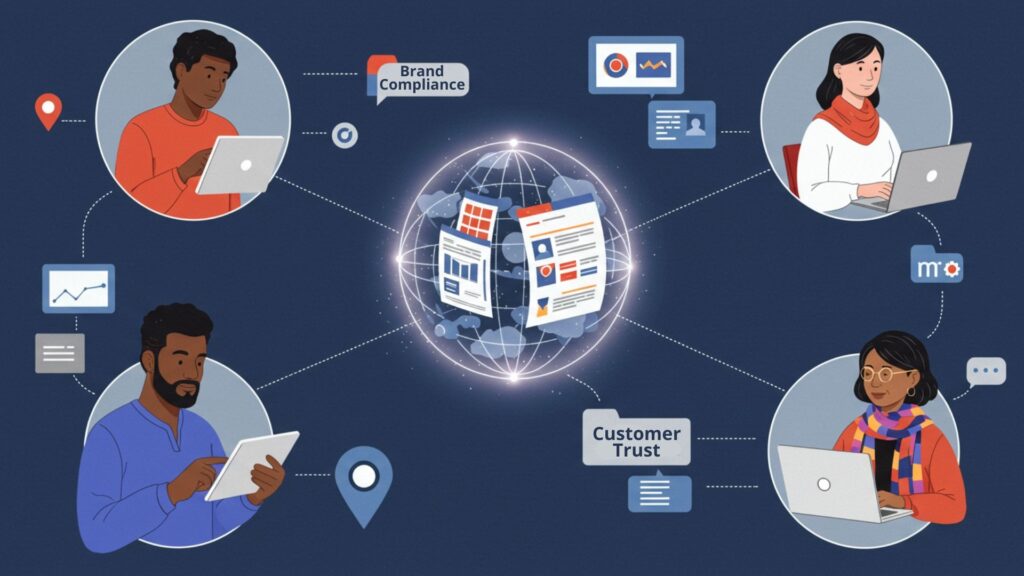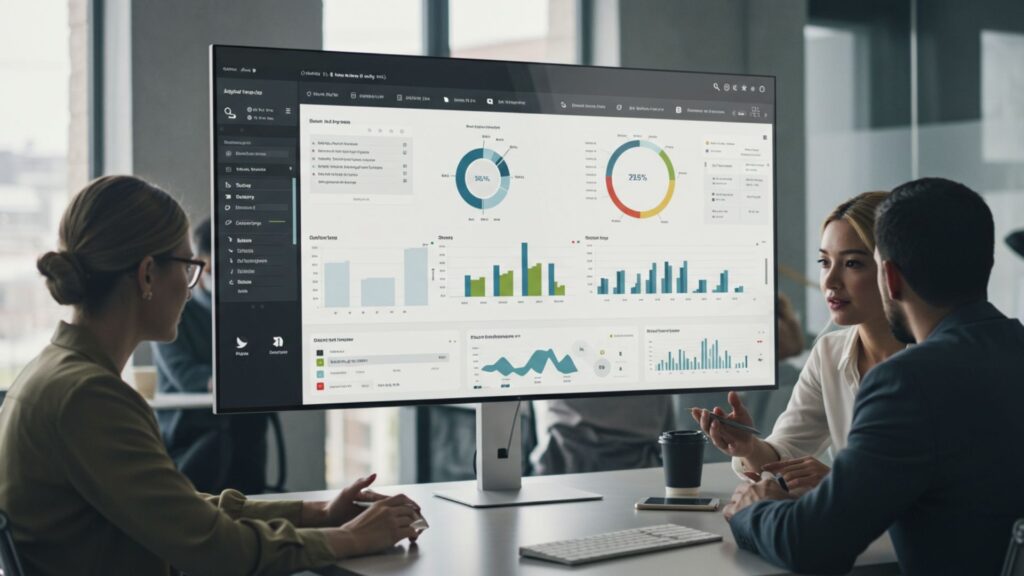Enterprise organizations are generating and managing immense content libraries across countless formats, channels, and teams. A Forrester Consulting study found that 63% of marketing leaders say managing a growing list of providers is one of the most complicated aspects of their operations, highlighting how content-related complexity is straining large organizations.
As the volume and velocity of digital content continue to increase, so does the need for unified content operations that streamline access, ensure compliance, and accelerate campaign execution. For many organizations, this complexity has reached a breaking point, where legacy systems no longer scale or support modern demands.
More businesses are investing in digital asset management (DAM) solutions to take control of their content at scale. Purpose-built for the demands of content management in big enterprises, these platforms serve as centralized hubs that empower teams to manage digital assets, standardize workflows, and reduce operational risk.
Whether you’re juggling thousands of rich media files, maintaining regulatory compliance, or trying to eliminate content duplication across business units, the right technology foundation can help turn complexity into a competitive advantage.
Rethinking Enterprise-Wide Strategies for Managing Digital Content at Scale
As the content landscape grows increasingly fragmented, managing rich media, creative files, and marketing materials across multiple business units has become a logistical challenge and a strategic imperative. Traditional content management systems often fall short in large, dynamic environments where speed, consistency, and compliance are essential.
Enterprise leaders are rethinking how they manage digital content holistically by adopting integrated platforms that combine digital asset management with robust enterprise content management (ECM) capabilities.
Modern enterprise content management strategies enable business agility through intelligent automation, secure collaboration, and streamlined content lifecycles. With the right combination of tools, organizations can reduce manual processes, increase user adoption, and drive efficiency across every touchpoint in the content supply chain.
From Fragmentation to Centralization
Siloed content repositories make it nearly impossible for teams to collaborate effectively or maintain consistent messaging. A unified enterprise content management system provides a central location for managing all your digital assets, whether it’s brand assets, product imagery, or training materials. A centralized repository supports better search capabilities, faster asset reuse, and lower operational overhead.

Aligning ECM and DAM for Operational Efficiency
Combining the strengths of an ECM platform with a purpose-built DAM solution unlocks new levels of operational efficiency. While the ECM system handles stored documents, version control, and records management, the DAM software powers rich media workflows, asset creation, and distribution across digital channels. This synergy supports an integrated content ecosystem where every file can be managed securely and intelligently.
Digital Asset Management: The Cornerstone of Enterprise Content Control
In large organizations, digital content multiplies across departments, channels, and formats. From audio files and video clips to infographics and eBooks, digital assets are the fuel for modern marketing, sales enablement, training, and customer engagement. Without the right systems in place, this content becomes difficult to locate, maintain, and govern, leading to inefficiencies and organizational risk. Digital asset management has become a foundational element of every scalable content management strategy.
Unlike traditional content management systems that focus on text-based or document-centric files, digital asset management platforms are built to handle the complexities of rich media. They offer centralized control, advanced access permissions, and automated workflow management. Business stakeholders gain the tools they need to find, use, and repurpose digital content quickly without relying on ad hoc processes or IT intervention.
Key Features that Empower Control and Collaboration
The best DAM software supports project management, collaboration, and brand governance. Features like metadata tagging, AI-driven search, and built-in version control allow teams to manage content more intelligently and at scale. Access control ensures the right people can use the right assets at the right time, while audit trails and usage rights help teams maintain legal compliance across global campaigns.
Enabling Organizations to Access All Their Digital Assets with Confidence
A modern digital asset management system ensures teams can easily access digital assets from a single, secure location whether they’re working remotely, collaborating with agencies, or repurposing legacy content.
Centralized visibility reduces duplication, increases content ROI, and helps marketing teams move faster across all digital channels. By integrating with upstream and downstream content management tools, DAM becomes the linchpin of enterprise content control and a key enabler of digital transformation.
Maintaining Brand Consistency Across Global Teams
For global enterprises, ensuring every region, department, and partner represents the brand accurately is a daily challenge. Brand inconsistency can damage customer trust, create compliance issues, and reduce the effectiveness of campaigns. A robust digital asset management solution keeps distributed teams aligned and empowers them to execute flawlessly across digital channels and markets.
By acting as the single source of truth for brand assets, a DAM system gives marketing, creative, and sales teams instant access to pre-approved materials. Departments benefit from reduced errors and guaranteed on-brand execution every time.
Whether you’re rolling out a global product launch or adapting creative for regional campaigns, centralized access to current, compliant digital content ensures everyone is working from the same foundation.

The Role of DAM in Enforcing Brand Guidelines
Instead of relying on shared drives or outdated folders, DAM platforms offer structured environments with role-based access control, dynamic guidelines, and expiration dates for assets. This makes it easy to enforce brand standards and retire outdated content before it creates inconsistencies in the market.
For example, a U.S.-based marketing team can publish new product visuals, and the EMEA team can immediately access localized versions with confidence, knowing they meet brand and legal requirements.
Streamlining Cross-Functional Collaboration
Speed and consistency often conflict, especially across time zones and departments. But with the right digital asset management in place, brand teams don’t have to sacrifice one for the other.
Integrated collaboration tools within DAM platforms support real-time feedback, approval workflows, and regional customization while maintaining core brand integrity. Teams can easily adapt content for local promotions, align with cultural nuances, and reuse high-performing materials without creating bottlenecks or starting from scratch.
Future-Proofing Your Tech Stack with Integrated DAM and ECM Platforms
Siloed tools and legacy platforms may have worked when content volumes were lower, but they can’t keep up with the speed, scale, and compliance requirements of modern business. Future-ready organizations are investing in integrated architectures where digital asset management systems and enterprise content management software work in tandem, creating a foundation for agility, security, and innovation.
The key to future-proofing is building a content operations infrastructure that’s adaptable. That means prioritizing interoperability, extensibility through APIs, and intelligent automation to eliminate manual bottlenecks. It also means understanding how your DAM solution and ECM system will interact with other critical tools like content management systems, creative suites, and collaboration platforms.
Evaluating the Right Digital Asset Management System for Your Needs
Choosing the right digital asset management platform depends on more than just features. Start by assessing scalability: can the platform grow alongside your business and handle increasing volumes of rich media and unstructured content? Look for seamless integrations with your existing tech stack, from Microsoft SharePoint to creative tools like Adobe Creative Cloud.
User experience is another critical factor. An intuitive interface drives user adoption, while advanced search capabilities, personalized dashboards, and AI tagging reduce friction and improve asset findability. For highly regulated industries like healthcare, finance, or pharmaceuticals, ensure your DAM includes enterprise-grade access permissions, secure storage, and tools for regulatory compliance risks, including audit trails and content expiration workflows.
Connecting Your DAM Solution to the Larger Content Ecosystem
A forward-thinking DAM should serve as the operational hub of your broader content ecosystem. That means tight integration with your ECM platform, content management tools, and business automation systems. By connecting your DAM software to your ECM tools and cloud infrastructure, you can enable smooth transitions between asset creation, approval, publishing, and archiving from a centralized repository.
Modern DAM platforms also leverage APIs, automation, and AI to enable smarter content workflows. From automatically triggering content review cycles to recommending assets based on usage patterns, these features help teams reduce manual work and move faster. More importantly, they support a holistic approach to content lifecycle management where stored documents, creative files, and digital formats work together as part of a single, unified ecosystem.
Measuring and Optimizing Content Performance Across the Enterprise
Once your digital asset management system is in place, the next step is turning content activity into actionable insight. For enterprises managing thousands of assets across teams and markets, performance data is essential to prioritize investments, improve user engagement, and align efforts with business outcomes.
A mature DAM and enterprise content management strategy should include built-in analytics and integrations that help track usage, uncover inefficiencies, and support smarter decision-making across the organization.
From identifying your most-used brand assets to flagging underperforming creative assets, content analytics transform asset management from a tactical function into a strategic advantage. These insights help marketing teams create more effective campaigns and enable business stakeholders to justify content spend and forecast future needs.

Tracking Asset Usage and Engagement Across Digital Channels
Modern digital asset management software provides visibility into how content performs across the enterprise. Built-in reporting tools and dashboards track which digital assets are being accessed, downloaded, and reused, offering powerful insights into team behavior and content effectiveness. These metrics help identify top-performing marketing materials, uncover unused or duplicate assets, and inform which types of content should be prioritized for future campaigns.
Beyond internal efficiency, performance analytics are increasingly vital to shaping personalized content experiences. By integrating your DAM system with downstream tools like marketing automation platforms or customer data platforms (CDPs), you can see how different audience segments interact with specific content types across digital channels. Teams can match creative formats and messaging with user preferences, turning static asset libraries into engines for customer engagement.
For example, if certain product demo videos are consistently driving engagement among enterprise buyers, marketing teams can double down on similar formats for that audience. Or, if specific rich media assets are performing well in one region but not another, localized versions can be tested for better resonance.
A well-connected digital asset management platform becomes central to delivering smarter, more impactful content at every stage of the customer journey.
Using Insights to Optimize Content Creation and Lifecycle Management
Analytics optimize every stage of the content lifecycle, from planning and creation to distribution and retirement. With visibility into which digital content is actually being used, teams can eliminate redundant asset creation, reduce manual rework, and reallocate resources to high-impact formats. A data-driven approach ensures content is built with purpose, not guesswork.
Insights from your digital asset management software can also drive better cross-functional alignment. For example, sales enablement teams can provide feedback on which marketing materials resonate most with buyers, while legal or compliance stakeholders can flag recurring content issues before they become risks. By making performance data accessible across departments, enterprises create a shared understanding of what “good content” looks like and how to replicate it.
Another often overlooked benefit is content retirement. With usage data and asset age metrics, organizations can identify outdated, irrelevant, or underperforming assets and safely remove them from the active library, keeping the centralized repository clean, current, and easier to navigate.
Finally, forward-thinking teams use these insights to enable predictive planning. If certain content types historically perform well before a product launch or industry event, those trends can guide preemptive asset creation. Adopting a proactive model reduces last-minute content scrambling and supports a more agile, scalable approach to enterprise content management.
Take Control of Enterprise Content for Sustainable Growth
Managing content at scale doesn’t have to feel overwhelming. With the right systems and strategies in place, large enterprises can transform fragmented workflows into streamlined operations, gain visibility into asset performance, and deliver consistent, personalized experiences across every digital touchpoint. The key is building a foundation that supports both structure and flexibility, centralizing control without slowing teams down.At Aprimo, we understand the demands of content management in big enterprises because it’s what we were built for. Our digital asset management and enterprise content management solutions are designed to power every stage of the content lifecycle, from creation to performance analytics, with automation, governance, and agility at the core. We help organizations like yours manage all your digital assets from a single platform, optimize for brand consistency, and scale content operations without compromise. Get a personalized demo of Aprimo and see how we can help your team move faster with more control.


